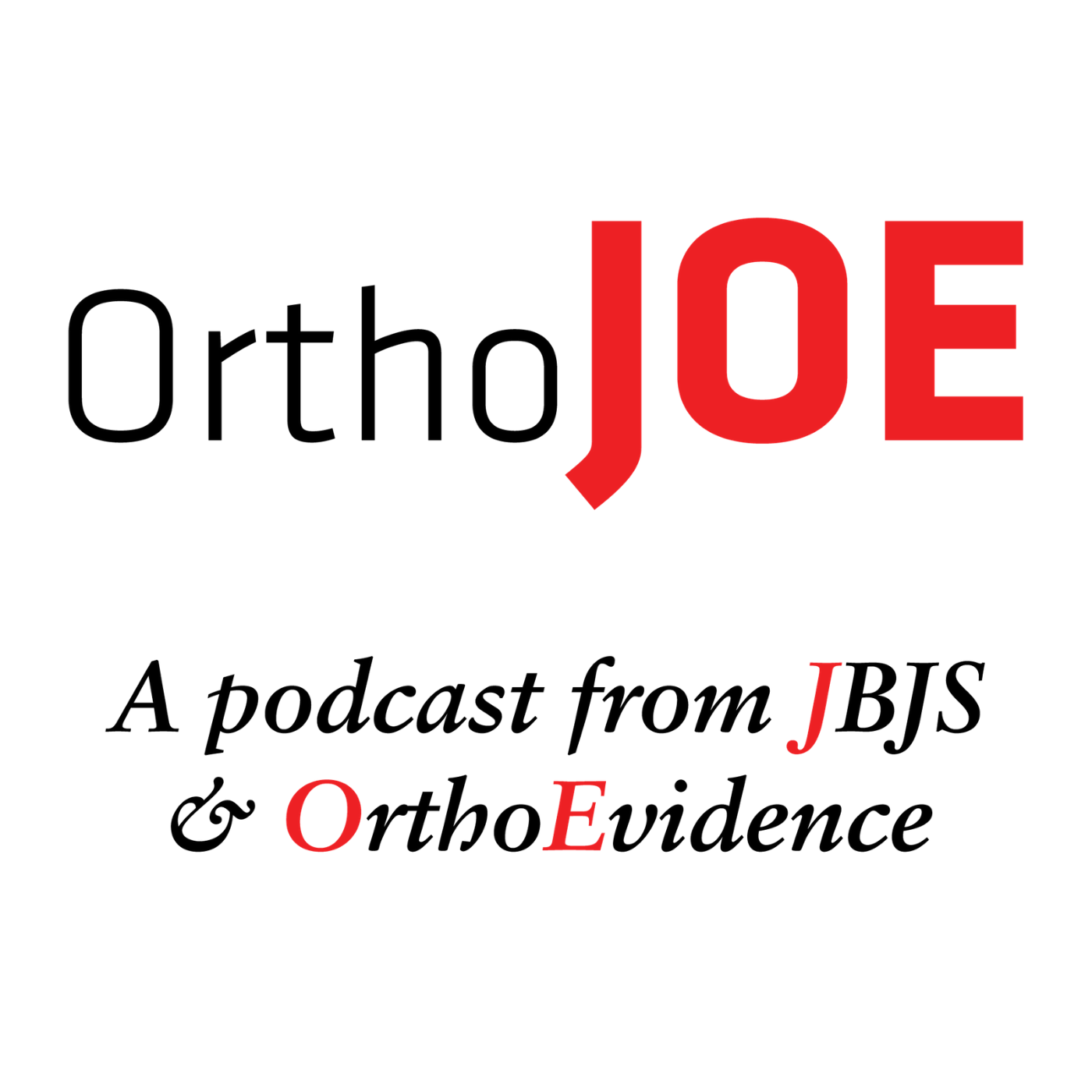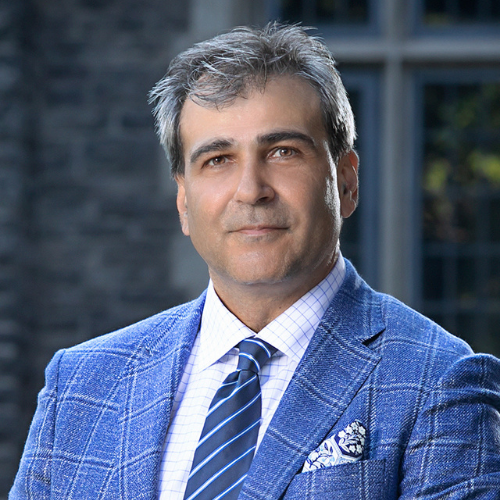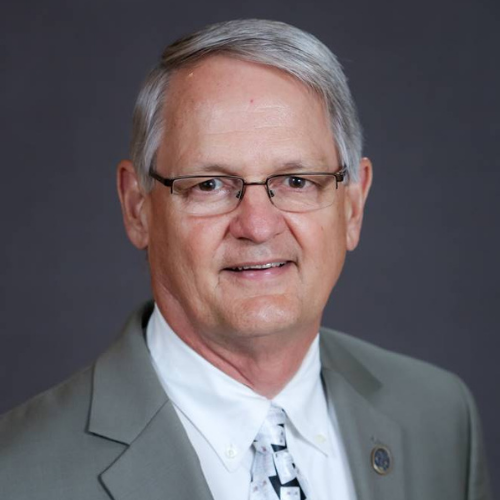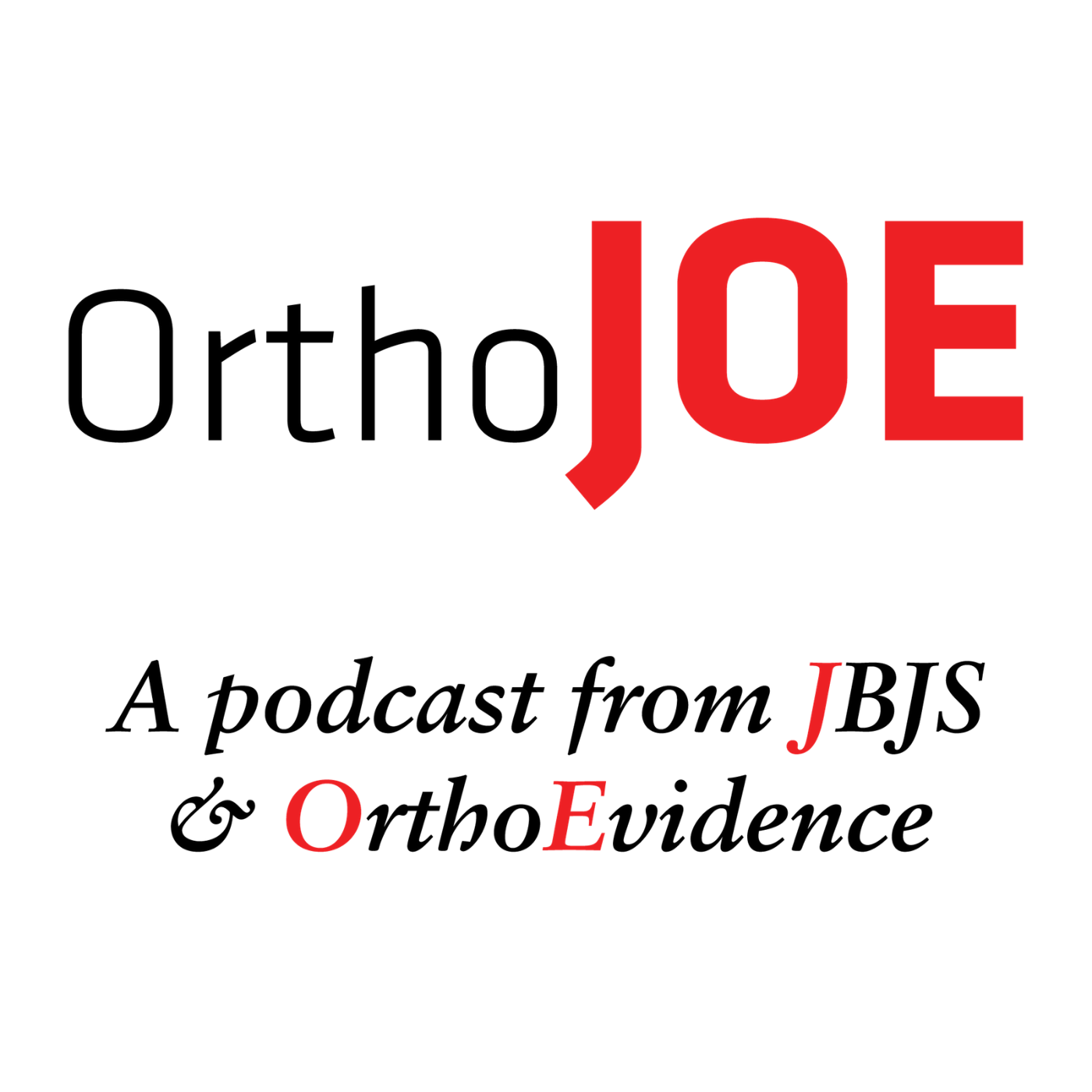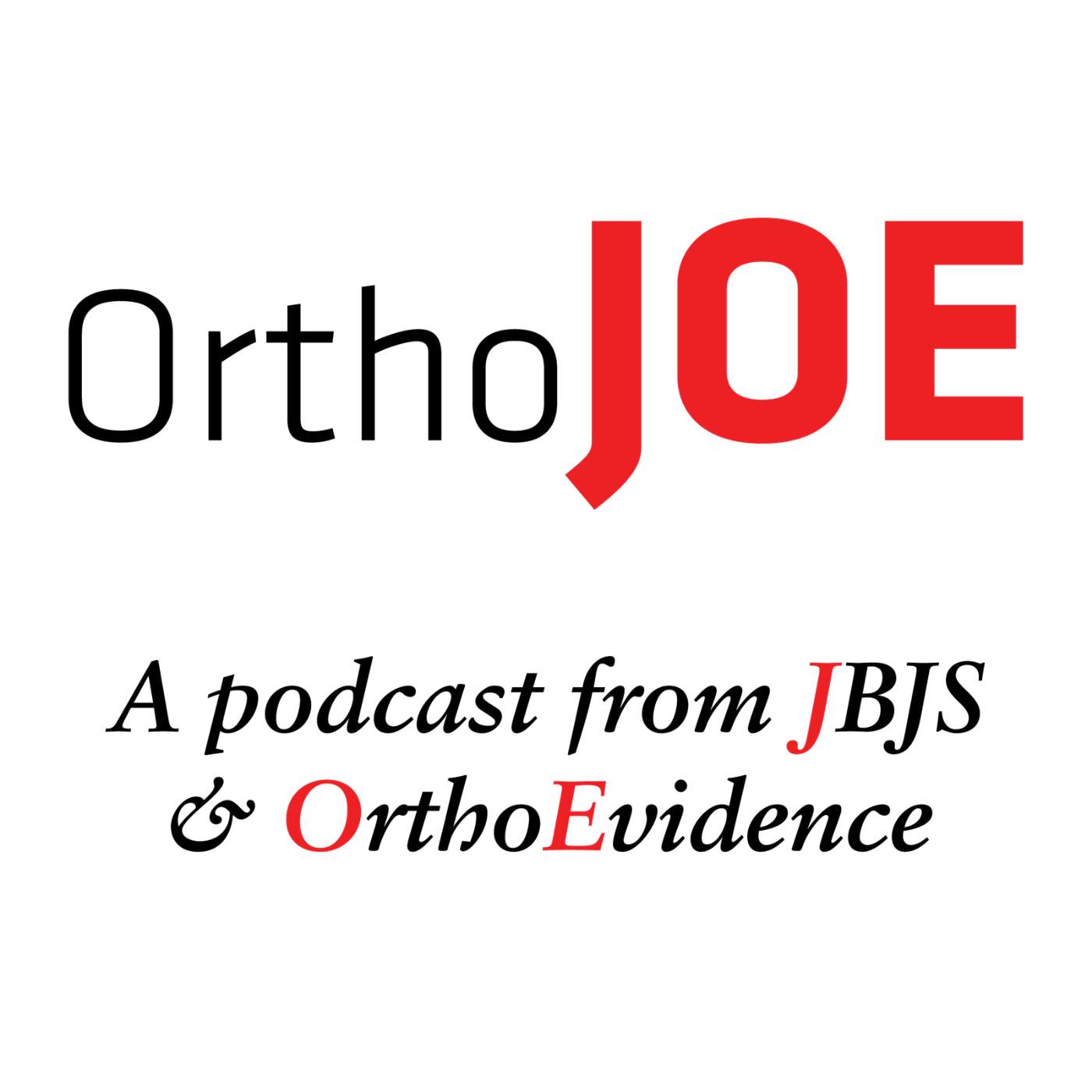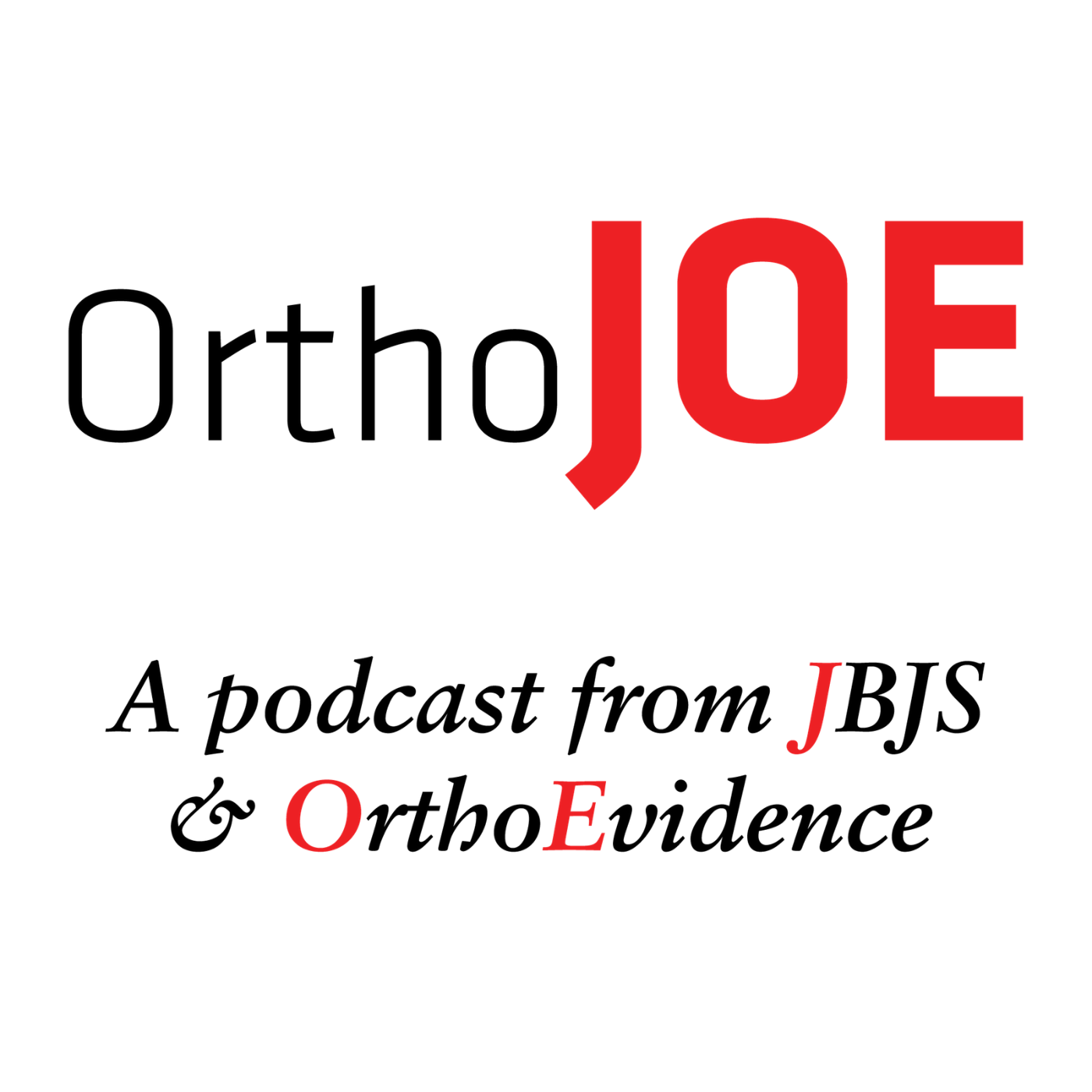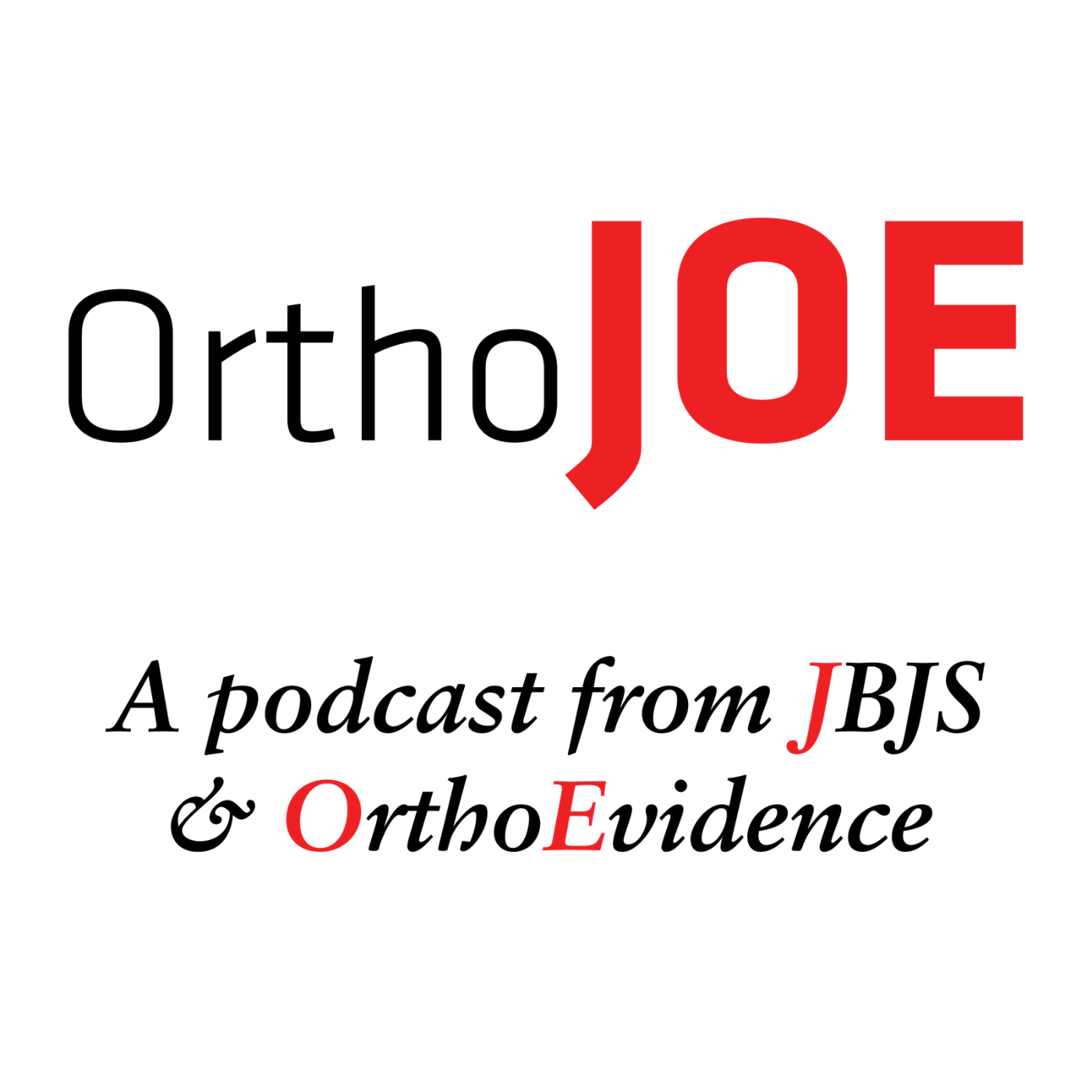Episode Transcript
[00:00:03] Speaker A: Welcome to JBJS Ortho Corps. Listen as members of the ortho community, residents, surgeons, educators, staff and patients share their stories about the experiences and people most important in their lives and the lessons they learned along the way. OrthoCorps is an audio archive inspired by StoryCorps and independently organized by the Journal of Bone and Joint Surgery.
[00:00:29] Speaker B: So if you don't mind introducing yourself and let us know where you did your training and where you were working.
[00:00:35] Speaker C: I'm Dr. Robert Winquist.
I'm from Seattle, Washington.
I was born in Seattle, Washington. I went to the University of Washington for 12 years, including my residency, and I worked at the University of Washington.
[00:00:52] Speaker B: Great.
So how did you originally get interested in orthopedic surgery and specifically orthopedic trauma?
[00:00:59] Speaker C: I was going into internal medicine and may of my senior year of medical school I took a one month rotation on orthopedics and I'd already worked at Harborview, which I liked a lot. And I thought, this orthopedics is great.
And so I decided to go into orthopedics. And then my internship was in Dallas, Texas at Parkland Hospital.
And my first month there I had an elective and, and I took the surgery emergency department as an elective, which was called the surgery Pit. It's where they took President Kennedy.
And I arrived there and I just thought, this is pretty exciting. So between that and Harborview and Orthopedics, that was it. So going into orthopedics, going to do trauma.
[00:01:51] Speaker B: So were there specific mentors who influenced you?
[00:01:55] Speaker C: Most important one probably was Ted Hansen, who was working at Harborview and was really great, and Mike Kopis at Harborview. So we were involved in starting the whole Medic one program that then spread across the country.
So prior to that, ambulances were what we called scoop and run.
So they'd bring somebody and run them to the hospital. And as we developed Medic 1, first on the cardiac side, then on the trauma side, the care went to the scene and people got IVs and splinted and everything. You can intubated and everything you can imagine. And all of a sudden people that would have died were now coming for us to take care of them. And our work got a lot harder because these people had really bad injuries.
So Ted Hanson on the orthopedic side, Mike Kopas on the emergency side.
[00:02:45] Speaker B: And what year was that that you were starting?
[00:02:48] Speaker C: That would have been, well, 73 as a resident, 74 as faculty.
So I'm one of the old timers.
[00:02:57] Speaker B: Here that you're Talking to today, what lessons would you say your work life has taught you?
[00:03:06] Speaker C: So many lessons?
Well, I feel so blessed to have taken care of all these people. So patience. I mean I did a lot of research and a bunch of other stuff but taking care of patients was just the best and, and actually it took care of a lot of people that had a lot of problems and to then see them later and some 20 year old with an open tibia fracture who was a bad alcoholic and things weren't going well, would see them or their family 20 years later because I stayed in Seattle and they would come in and they had a successful business in Seattle and it was just great to see these people and people with terrible mental illness that would then get on some medication and turn around and be like normal people. And so taking care of these patients was great. And the attitude of the hospital staff, working with the people I worked with was just a blessing. So that was great. And then trying to hold home together, that was, that's tough. So I'm fortunately been married 54 years and have wonderful trouble children and grandchildren and that's pretty hard to do in this business.
[00:04:16] Speaker B: So definitely.
So what are you proudest of?
[00:04:25] Speaker C: Being married for 54 years.
[00:04:27] Speaker B: It's a big accomplishment.
[00:04:29] Speaker C: Tough.
[00:04:31] Speaker B: Do you have any regrets?
[00:04:36] Speaker C: I don't think so. I quit. So when I, I didn't taper, I went full tilt and then I quit and people voted against, people all bet against me because I went full tilt and they bet I was going to fail retirement.
And three months into it I woke up one morning and I went, what am I going to do with myself today?
And it cleared at 11 o' clock and I've never had another thought.
So I was very happy with my. I really like my work but I didn't want to fade and so I was pretty happy to quit and go on to the next life.
[00:05:16] Speaker B: So if you could talk to a younger version of yourself, what would you say?
[00:05:22] Speaker C: I don't know. Because we worked so hard and on the one hand it seemed like it took that hard work to, you know, well, we had to figure it all out. It was all new then and it was tough because as a resident I was given national lectures and national meetings and people were standing up from the well known orthopedic screaming, that's malpractice. So what we were doing here in Seattle and because of all the trauma and medic one and everything else, it was really pretty wild and crazy out here and at the same time we were being criticized heavily and that was pretty tough. And we basically ignored it and went on. And then it took the rest of the country five years to start catching up. But that was.
So that was a hard.
That was a little hard, but I felt I had to work that hard. And then it got to be too hard. So there were two of us, then there were three of us, then that went too five, and then that went to eight, and that went to 12. And then finally they got it where they could survive. So I don't know, maybe I worked too hard.
I didn't feel like it. I didn't feel overworked because I enjoyed what I was doing.
[00:06:42] Speaker B: So how has your life been different than you imagined?
[00:06:46] Speaker C: I've never imagined things.
So I didn't.
I've never had real plans.
I don't do that. I just.
I go full tilt of what I'm doing and then.
And then I make the most of it. So I didn't imagine things.
Medical school, I applied. I was in my third year of university, and a friend said, why go to a fourth year? Why don't you just go straight to medical school? So I said, oh, okay. So I got in after three years. There were only four. But I never graduated from undergrad. I got into medical school, and then when I went to internship, I was supposed to go in the military, supposed to be drafted, and then they didn't draft. And so I hadn't even applied for an orthopedic residency. And the department chair called me and said, I thought you wanted to go into orthopedics. And I said, well, I did, but I don't have my military out of the way. He says, well, you still want to do that? And I go, well, yeah. And he goes, okay. I said, do I need to fill out an application? He says, no.
So that was my planning for orthopedic residency. And then while I was a resident, I still had. I was in, starting my senior year. And they said, well, do you want to be on the faculty? And I said, sure. And they said, okay, well, you don't have to complete the residency. You're on the faculty. So that's how my planning has gone. So it's just.
And then full, full tilt.
[00:08:16] Speaker B: So are there any funny stories or characters from your career that you'd like.
[00:08:21] Speaker C: To talk about that I can talk about, that I can talk about?
Well, there's just lots of great experiences.
The.
For this society. Orthopedic Trauma Association.
I was there before it started. So we actually had a meeting before the first meeting and met with great people. There were very few people interested in the country in trauma. There were only a few of us. And so we were at a few hospitals and we'd go visit each other and we'd see all different things going on with these people that were interested. And. And I was younger than they were, and so they'd all tap me on the shoulder and tell, you'll be okay. You should keep doing this. So I got to interface with all. Lot of great people.
[00:09:06] Speaker B: That's great.
[00:09:07] Speaker C: Still do.
[00:09:10] Speaker B: Is there a specific orthopedic trauma device, technique, procedure, or innovation that you have a connection with that you'd like to share?
[00:09:20] Speaker C: It's a long list.
One interesting thing coming here, first of all, I determined we should start a residence course at ota. So I felt the residents needed to be trained in trauma because they were all going to do it when they finished, whether they did it for very long or not.
So I started the residence course.
And then I noticed that the members of OTA weren't all coming to the meeting if they didn't have a paper.
So. And we had a lot of famous people from mostly North America and Canada then, but also around the world. And so I started the residence course. I would then assign them talks they had to give to the residents and therefore got all the famous members back, got all the residents here, got the teach all the residents.
Then we needed bones for them to do all these labs. I don't know if you've gone to any of those. So the bones we developed were right here on Vashon island, just out the quick ferry boat ride from here.
And so there was a guy, Fred Lippert, who came up with the idea. And K2 skis, the ski factory was on. On Vashon, and two guys from K2 took an old barn and we made the bones.
So I would go over there because I had all the. I did a lot of surgery, and I would go over and I'd drill and say, no, that isn't quite right. And they'd change the formula and then drill some more. And so all these bones that are used in all these courses around the world that came then I, as resident, I started designing things designed first with Boeing engineer, one of the leads on the SST program.
And it was for my aunt.
So my aunt had an ephemeral healing problem. So we designed this various equipment. And SST was the supersonic transport. Boeing was going to have a Suplex Concorde, and Boeing ditched the program.
And so when they decided not to go ahead with it, and they were pretty far into it. They ditched the program. And so I was lucky to have the whole Boeing engineer, SST engineers working with me for this little orthopedic thing that wasn't a big deal, but I had some great, great engineers.
And then I've designed a device for the hip with the Swiss called a dynamic hip screw. And it became really well known and really well used. Then one of the most important things, and I designed all kinds of nails and plates and equipment, but probably the one that's used the most, that was most important is all these companies were making all these nails and plates and everything for people to use.
And they'd come to the operating room and help us and be there and everything else, and then they're gone. And then the patient comes back and they're having a problem. And now we have to take this thing out.
And the companies wouldn't come because they weren't making any money taking something out, only putting stuff in.
So I was president of OTA at the time. I called all the companies into a room like this, sat them at a table because they never met with each other. And I said, okay, you guys, you're all here, you all sell stuff, everything else. But when it comes to time to take it out, it's really hard for us because we don't even know what screwdriver or anything else we're facing. I said, here's what I want.
I want every one of you to give me your engineering drawings so I know exactly what the threads look like, the screws look like, the heads look like, the everything looks like. And I said, then I will get an independent company because I know you all compete with each other, and I don't want to give it to any one of you. I'll get an independent company and I will get paid nothing for it. I'll get one set of tools. That's all I get. And I said, is there anybody. And I was the president, the organization. I said, is there anybody here that doesn't agree to do that? It was a little bit of a hard, hard hit, and nobody disagreed. So then we developed a whole set that people have when somebody comes to get something out and at a kid, it's not. And snap on tools was who I chose to do the work. So that's probably the thing I've developed, but I've developed other whole plate systems, whole nail systems, whole all kinds of systems.
But that's the one that probably is most important, because the rest of it, they can get from different people. But this was. This was I hard thing and very important and got full cooperation of a lot of people. And the people at OTA knew I was doing this. It wasn't. I didn't call them into the room without other people knowing about it.
[00:13:52] Speaker B: For generations listening to this years from now, is there any wisdom you would want to pass on?
[00:13:59] Speaker C: I think that you need to work hard. So we started with a very small group of people, people.
And we all worked hard and we then recognized how important it was for patient care. And then we. I was the head of both the education department and program, so I ran the education and program for OA and OTA in putting the meetings together and designing them and all the rest of that stuff. And so education was to me, the most important thing to educate other people. And I think that's. Even if you're starting really small, if you interface with people and educate them and spend the time doing that, it is really, really important. And now I come to this and I've been retired for 12 years, and I come to this and I see now all these people that are so smart and so good and just, you know, across the world. And it all started with this one little group that worked hard and was willing to share information.
Now the term's open source. We were open source from the beginning and. And all of these people and all these faculty here and everybody is open source and willing to share information.
And it's just amazing. And it's just changed the treatment across the world. So it's really important.
[00:15:14] Speaker B: It's great. Well, thank you so much.
[00:15:16] Speaker C: Well, you're welcome.
